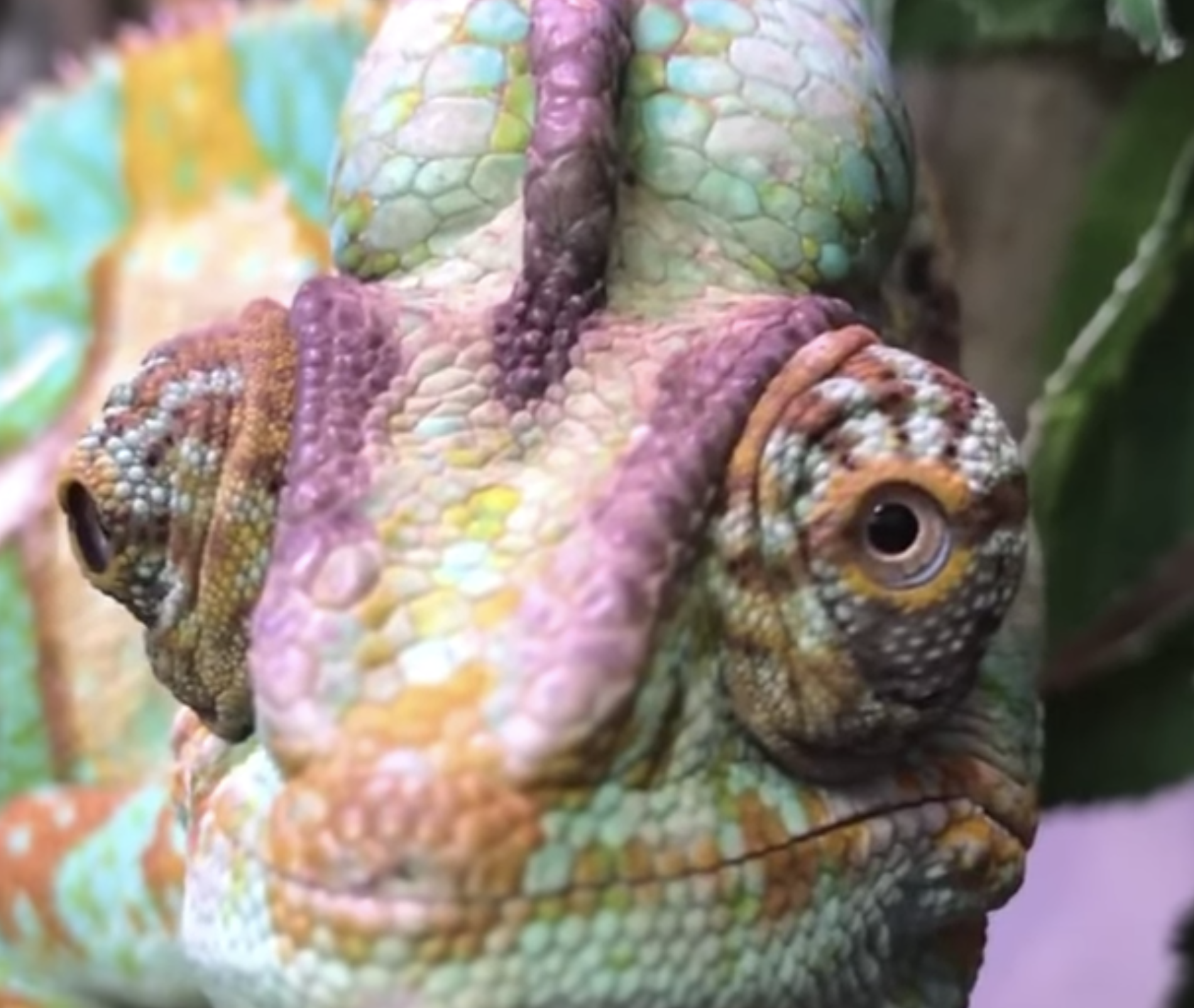Meet Neville Longbottom, Science City’s 2-year-old veiled chameleon.
Neville came to Science City’s Nature Works in 2019 through a rescue by a wonderful Union Station Member. He has a severely damaged and scarred “horn,” (or cask) on top of his head. But that doesn’t stop Neville from flirting with everyone who admires him. And he will always keep a close eye on you when you walk by his habitat… literally.
Neville’s diet consists of live insects only. No dead prey for him! He falls into a couple of our educational focuses, including invasive/non-native, but his main contribution is to biomimicry.
The Veiled chameleon (Chamaeleo calyptorarus) is native to Saudi Arabia and Yemen in the Middle East. While this conjures up dry, desert habitats, these animals are found among coastal mountain slopes that receive significant rainfall or in slightly more arid valleys with year-round available water and vegetation. The Veiled chameleon is also starting to show up in established small populations in parts of Hawaii, California and Florida, due to pet release or escape.
The chameleon packs a host of adaptations but most people focus on their ability to “blend in”. Unfortunately, most of what we learn as a child about that ability is false. There are over 100 species of chameleon and each species has its own color pallet. When at rest in it’s natural habitat, the chameleon is naturally camouflaged. They enhance colors they already have for communication purposes. They are like a giant mood ring! But as Neville so graciously modeled in his video, it’s the eyes that are unlike any other animal. Chameleons have the ability to move each eye independent of one another, giving them 360° vision for hunting while standing perfectly still. Scientists liken this to having two TV’s sending pictures to the brain. The eye that focuses on the prey first takes over the vision of the other eye and a signal is sent to the brain with both eyes then focusing on the prey.
What could you create with this adaption of the amazing chameleon? That’s biomimicry!


